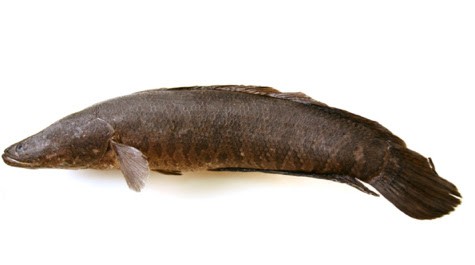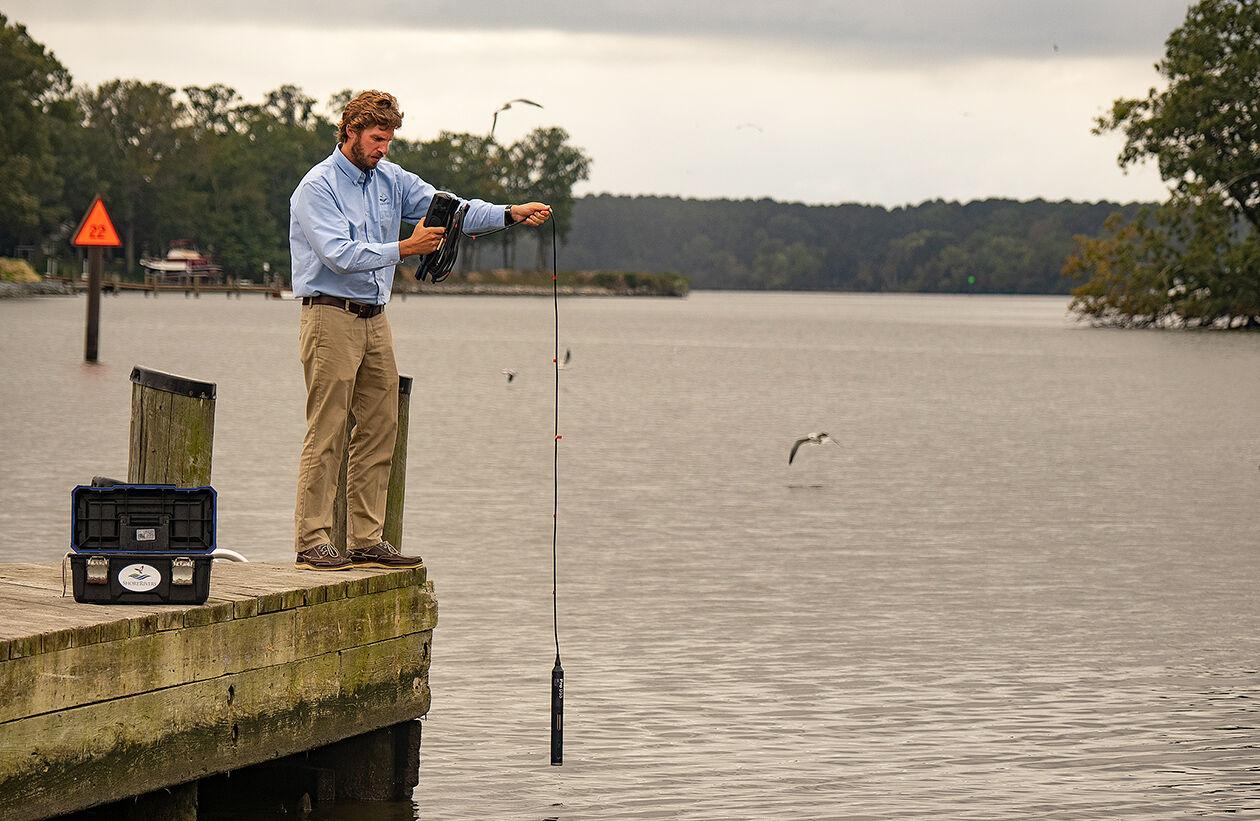The non-native northern snakehead has been found within the James River drainage and has joined two other regional specimens in a collection at the Virginia Institute of Marine Science (VIMS).
A northern snakehead from the Nunnally Ichthyology Collection at VIMS. Photo: Sarah Huber/VIMSBiologists from the Virginia Department of Game and Inland Fisheries (DGIF) collected the predatory fish from the Lakeview Reservoir just north of Petersburg. The specimen is now part of the Nunnally Ichthyology Collection at William & Mary’s VIMS.
The snakehead found in the James, which is the Chesapeake Bay’s largest tributary, is the third in the collection at VIMS; the fish first appeared in Virginia in 2004 in the Potomac River watershed, and another was found in the Bay near the Little Wicomico River.
The fish has also been found in other Maryland rivers as well as the Susquehanna and Delaware Rivers.
Eric Hilton, curator for the Nunnally Ichthyology Collection and Associate Professor at VIMS, believes snakeheads could make their way to the freshwater portions of the James and possibly beyond. “Snakeheads are restricted to some degree by not being able to live in full strength sea water- or even the main stem of the bay,” he explains. “But it’s possible they can get from the mouth of one tributary to another along the bay shoreline.”
Scientists think that the northern snakehead, native to China, may have ended up in the Chesapeake region after a live fish purchased from an Asian food market was released, or a “pet” snakehead that had grown too large for its aquarium was let go.
With concerns about the snakehead’s ability to disrupt ecosystems as a predator in mind, they were listed as “injurious wildlife” under the Lacey Act in 2002, and Virginia’s General Assembly made possession of live snakeheads illegal in 2005.
Although Hilton notes that the population of the species has stabilized or declined slightly since the snakehead became established in the area, the fish’s presence is still concerning. “Even if the population stays small,” he says, “introducing another non-native predator is not good for the overall health of the system.”
Now part of the collection at VIMS, the latest snakehead will be studied and used as an educational tool for biologists and the public, says Hilton.
-Laura Boycourt




